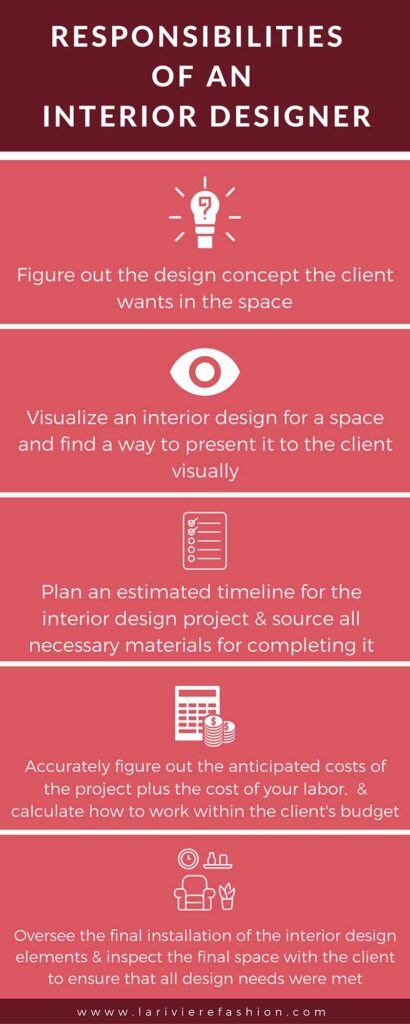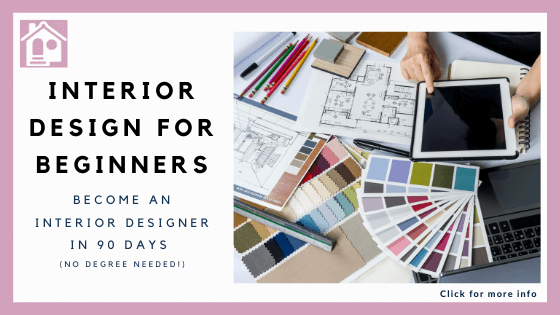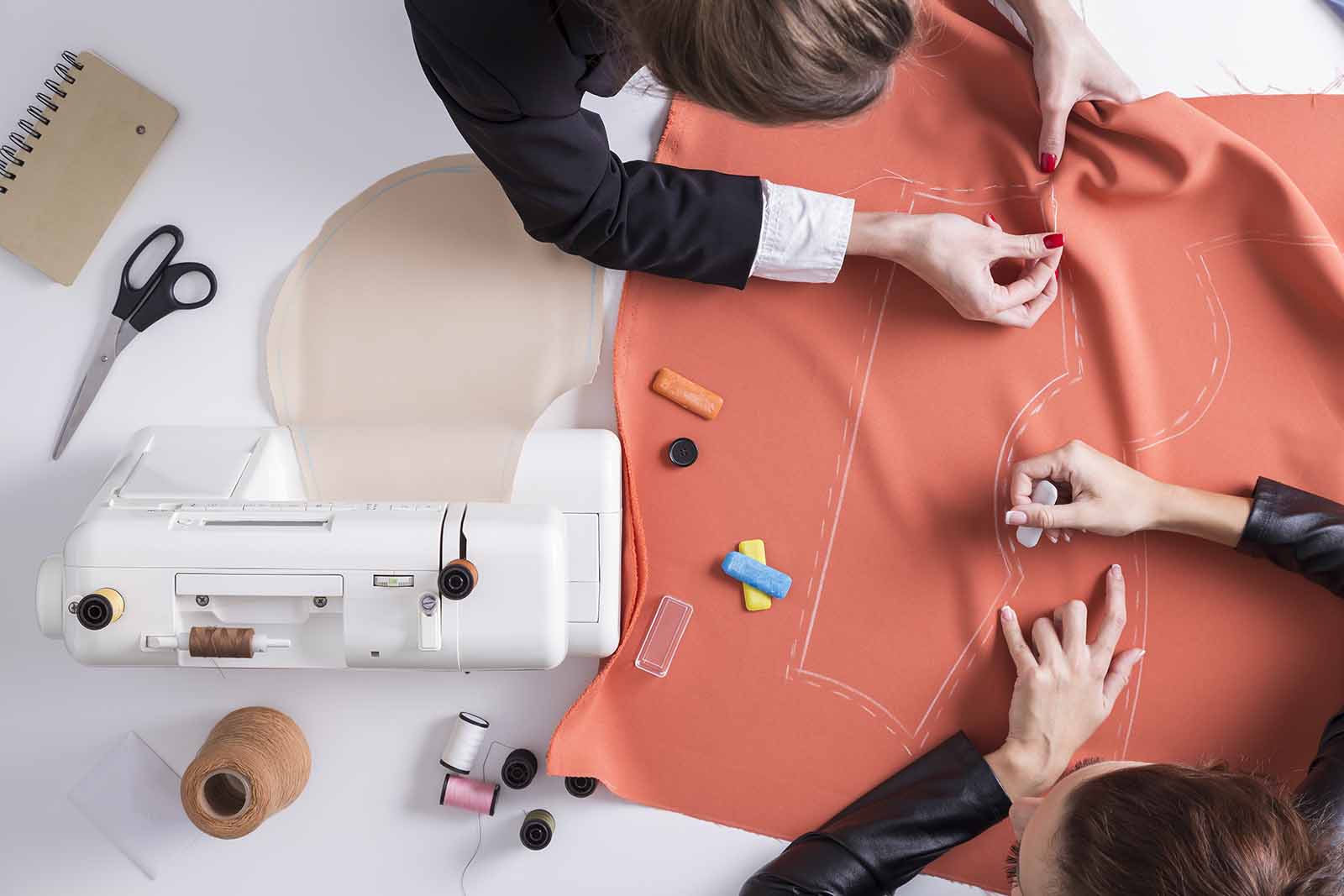What Does an Interior Designer Do?

Interior design is one of the most satisfying fields a creative can go into, especially if they’re already interested in the visual aspects of homes and interior design elements. While this is a satisfying career, it is also very competitive and requires many organizational skills.
Interior designers are responsible for choosing various elements of style and design for interior spaces, illustrating how these spaces will hypothetically look for a customer, and then implementing their design concepts to transform the space. Interior designers can work independently or with a firm.
Interior designers can turn the interior of a home or building into a true work of art, and the design options and concept that they can conjure up are almost limitless. Read on to learn more about interior designers and what they do for a living.
What Does an Interior Designer Do?
The main goal of an interior designer is to take a space that is either bare or pre-furnished and renovate it to look completely different. This renovation can involve building elements within the room itself as well as decorative elements such as paint, fabrics, furniture, and accent pieces.
Interior designers are often employed in newly constructed spaces to help develop a visual theme throughout the inside of the space. They design for both commercial buildings and newly-constructed homes. Not only do they implement their design concept on new, blank spaces, but many people also employ interior designers to renovate and completely change previously decorated spaces.
Types of Interior Designers
There are many different kinds of interior designers. Some interior designers are general and will take on any interior design job, while others choose a specific interior design niche.
Here are a few of the specialties that interior designers can “niche down” in (Source: Tough Nickel):
- Commercial design: Businesses often employ interior designers to design offices that are both restful for employees—encouraging them to spend more time there and productive spaces where people can work efficiently.
- Healthcare design: Interior designers who work in healthcare design conceptualize spaces such as hospitals, hospices, and medical offices. Interior designers who work in this field must be particularly attentive to designing spaces that are calming to people in stressful circumstances, such as people who are sick or injured.
- Interior redesign: Interior designers who work in interior redesign typically utilize pre-existing design elements within the space and “remix” them, sometimes incorporating new elements to freshen the visual appearance of the room. Interior redesigners are sometimes used by homeowners who want to change up their space but don’t want to throw out all of their existing design elements – just refine them.
- Residential design: Interior designers that specialize in residential design work in homes and apartment buildings. Living spaces often require very different design considerations than commercial or industrial spaces.
- Retail design: Retail design is an area of interior design that focuses on moving customers efficiently through retail building’s space as quickly as possible. Retail space must be able to handle as many customers as legally possible on any given day. This often includes using design elements such as color theory and other psychologically-based design elements to hurry or usher people through the retail space in a certain way.
Along with interior designers that specialize in these spaces, some interior designers are more generalized and have gathered experience working in a wider variety of spaces. However, these interior designers are typically not as knowledgeable about essential design aspects of specific buildings and spaces like an interior designer who specializes in those buildings and spaces would be.
Interior decoration is a similar career to interior design. However, interior decorators typically focus on more superficial design elements in residential or business design, such as fabrics, drapery, furniture, paint, and trim. The main difference between an interior designer and an interior decorator is that anyone can be an interior decorator, but an interior designer must obtain a four-year bachelor’s degree. (Source: My Move)
Responsibilities of an Interior Designer
Being an interior designer comes with many responsibilities, with the most important one being the ability to see a design project through from conception to installation.
Here are some of the responsibilities that an interior designer takes on with each new job (Source: Better Team):
- Figure out the design concept the client wants in the space
- Visualize an interior design for a space and find a way to present it to the client visually through the use of digital software, traditional illustrations, photographs, and swatches of potential fabrics and colors
- Plan an estimated timeline for the interior design project and source all necessary materials for completing it
- Accurately figure out the anticipated costs of the project plus the cost of your labor, and calculate how to work within the client’s budget
- Oversee the final installation of the interior design elements and inspect the final space with the client to ensure that all design needs were adequately met
The part of the interior design job that most designers love is creating the designs themselves. However, the more practical elements of the job require financial know-how as well as detail-oriented organizational skills. Interior designers must also have excellent soft skills in communication and conflict resolution, as some interior design clients can be quite picky or difficult to work with.

People Who Make Good Interior Designers
Certain personalities make better interior designers than others. People who have difficulty managing many different aspects of a project at one time and people who don’t like working with other people may not enjoy the tasks and activities associated with interior design work, even if they like designing spaces.
Here are some personality traits that make for good interior designers (Source: Truity):
- Artistic temperament: People who naturally have a flair for color or design elements make good interior designers since they are already attracted to seeking out those elements naturally. Being able to draw and paint also makes it much easier to develop accurate and aesthetically pleasing concept art to present interior design plans to prospective clients.
- Organization: People who are very organized and can keep track of details such as shipping dates, budgets, contracting schedules, and other minutiae of a job are much better interior designers than those who can’t. Interior designers also usually have to balance marketing themselves while completing interior design jobs to keep clients coming.
- Communication: Being able to communicate charmingly and persuasively is vital for an interior designer. It doesn’t matter how good you are at design if you can’t properly sell your idea to a client. Interior designers must also be able to resolve problems with a client if there is a delay in the design completion or if the client doesn’t like something in the design.
While artistic ability and the ability to visualize a design are both important parts of being an interior designer, many other skills are necessary, too, with most of them involving either communicating with people or delegating tasks for them. Interior designers need to enjoy working with people and talking to people. It is hard to find success as a designer otherwise, and it is a very competitive field. If you are interested in becoming an interior designer, you can achieve this even from the comfort of your home! Check out the best interior design courses online in that article!
(Something important about being an interior designer is looking the part. Check out this article on how to look stylish as a young professional on a budget!)
Interior Design is a Creative Field for People Pleasers
If you’re a person who enjoys making clients happy and using your artistic skills to visualize and install an interior space, then interior design may be the right field for you. This career allows for a large amount of self-expression and creativity while also testing the designer’s ability to coax and manage other people.
(Thinking about revamping your place? Check out these modern interior design tips!)










